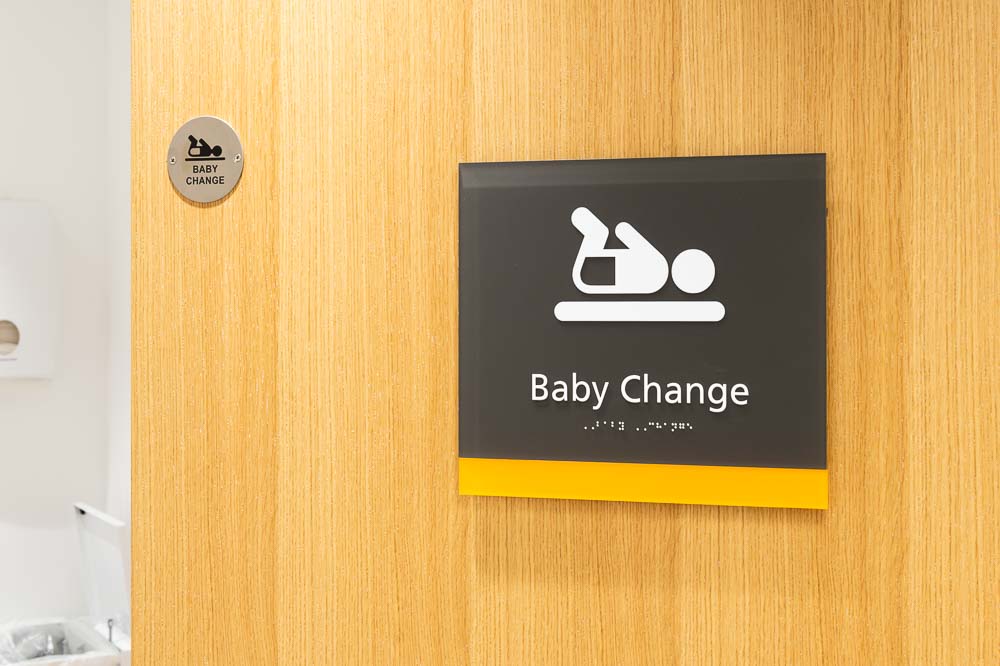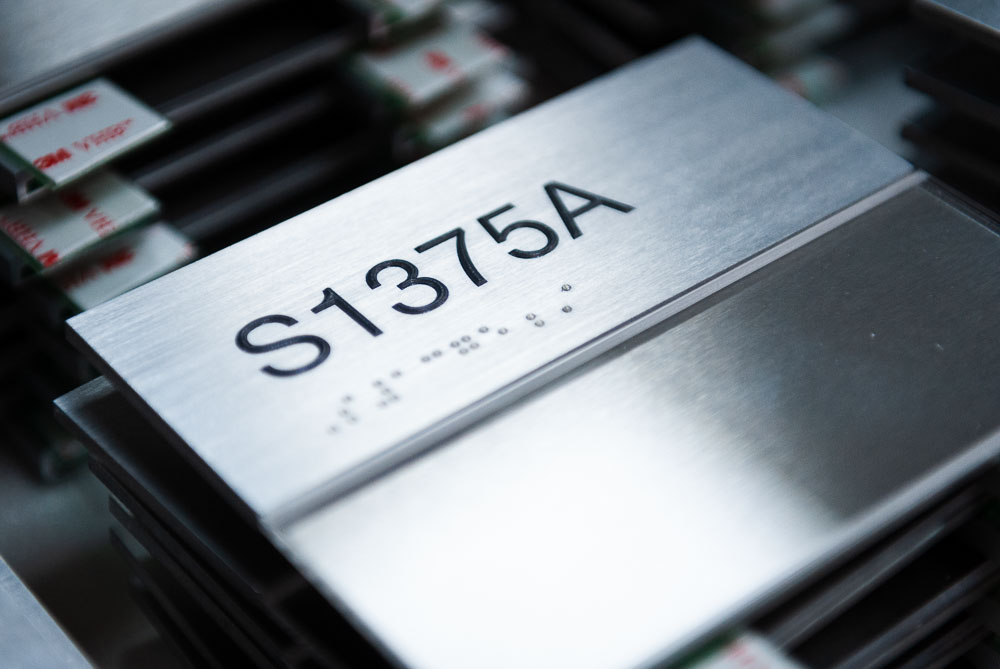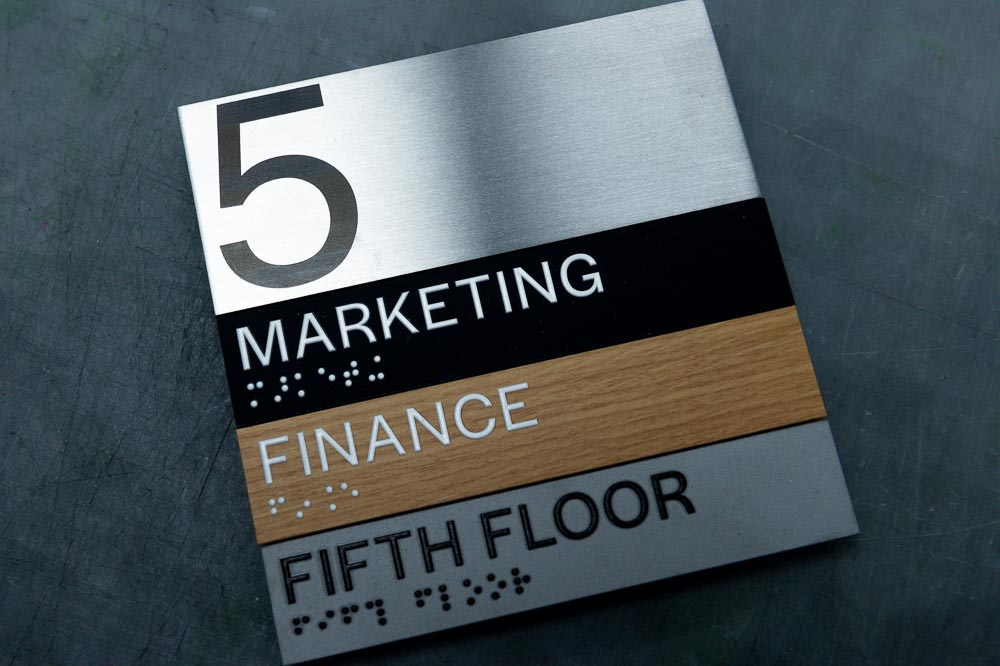The Equality Act was introduced in 2010 and is used to legally protect people from discrimination in the workplace and in wider society. It encompasses the Sex Discrimination Act 1975, the Race Relations Act 1976, and the Disability Discrimination Act 1995 under one act. The act replaced previous anti-discrimination laws with a single article, making the law easier to understand and strengthening protection in some situations. It sets out the different ways in which it is unlawful to treat someone.
Employers are legally obliged to comply with the legislation, much of which relates to the workplace environment and how disabled people may be helped to negotiate it. Modern office environments use signage to help users navigate, and this needs considerations in order to be compliant with the act.
In terms of wayfinding signage, braille and tactile lettering can help visually impaired people to navigate their way round a facility unassisted. Braille as a standardised reading and writing code, uses raised characters that are designed to be felt under the pad of the user’s finger to deliver information that they cannot see. xsign has also developed a talking sign, called talky, to aid navigation and wayfinding for those with sight loss.
Tactile Lettering. Tactile lettering can also be used in conjunction with braille on signage. The benefit of tactile lettering is that both visually able and impaired members of the public can use this system of touch if they need to. The embossed letters have a substantial relief from the surface that can be felt by the visually impaired user and viewed by those with normal sight, without trouble.
Lettering Characteristics. The main characteristics of an Equality Act compliant sign include the use of a matte substrate to help reduce glare when viewing the sign; tactile lettering should be raised by a minimum of 15mm and be created in a colour that has a clear contrast with its background, to assist legibility. Braille will always be positioned directly underneath the raised letters so that they can be found, and a raised semi-circle will be positioned at the left-hand edge of the sign, to denote the start of braille characters.
Fixing Height. All braille and tactile signage should be installed at a consistent height throughout a facility, allowing the disabled user to access them with ease. When installing this type of signage in a facility primarily used by children, signage should be installed between 1000mm and 1300mm, while in facilities used primarily by adults, signs should be installed between 1400mm and 1700mm.
If you need any guidance on ensure that signage complies with the Equality Act, contact us and we can help.



